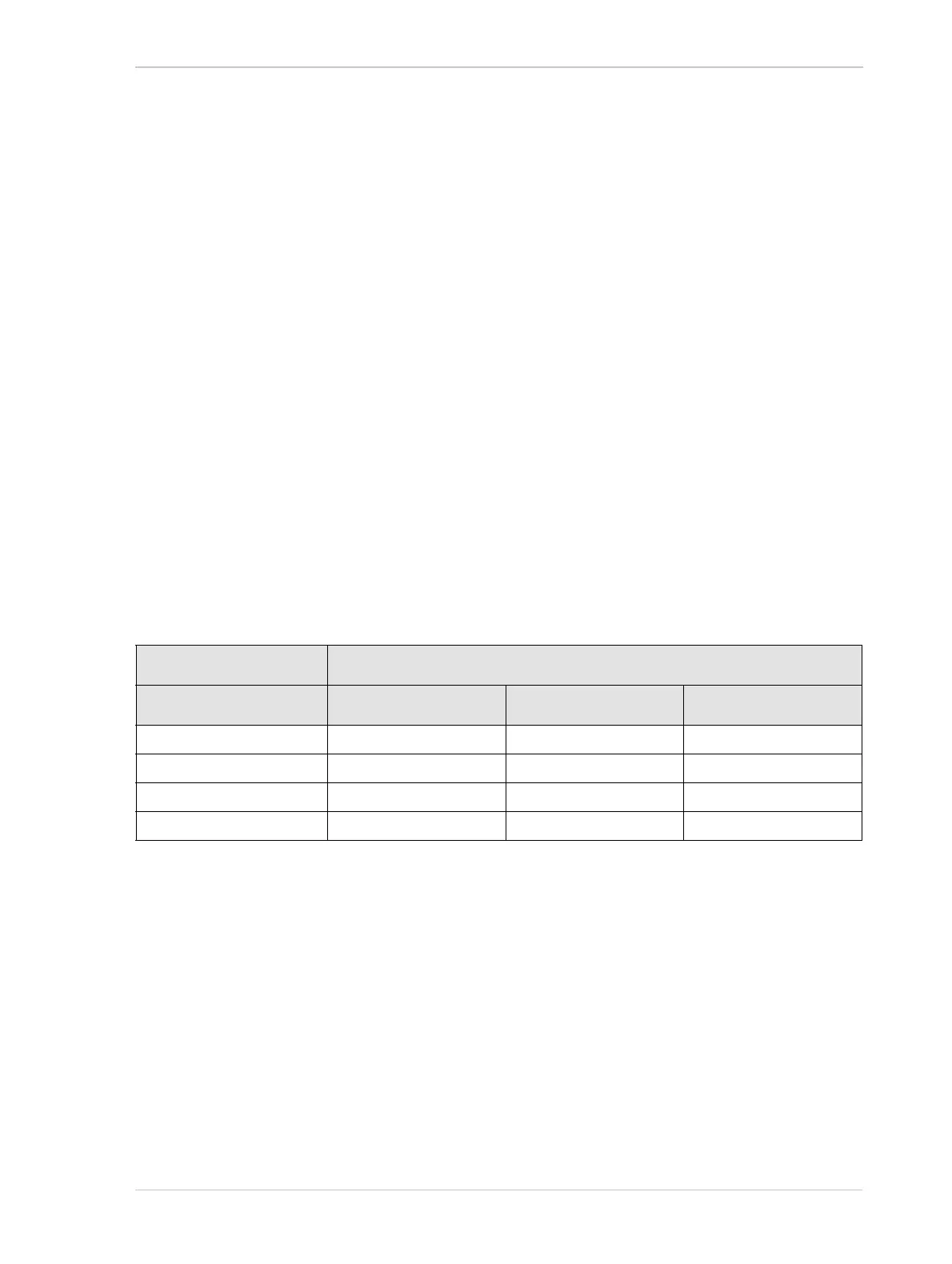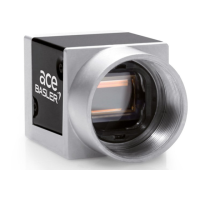AW00123409000 Image Acquisition Control
Basler ace USB 3.0 145
6.6.2 Rolling Shutter (acA1920-25, acA2500-14, acA3800-14,
acA4600-10 Only)
The acA1920-25um/uc, acA2500-14um/uc, acA3800-14um/uc, and acA4600-10uc cameras are
equipped with an electronic rolling shutter. The rolling shutter is used to control the start and stop
of sensor exposure. The rolling shutter used in these cameras has two shutter modes: rolling and
global reset release.
6.6.2.1 Rolling Mode
When the shutter is in the rolling mode, it exposes and reads out the pixel lines with a temporal
offset (designated as tRow) from one line to the next (see Figure 62). When frame start is triggered,
the camera resets the top line of pixels of the ROI (line one) and begins exposing that line. The
camera resets line two tRow later and begins exposing the line. The camera resets line three tRow
later and begins exposing the line. And so on until the bottom line of pixels is reached.
The exposure time is the same for all lines and is determined by the ExposureTime parameter
setting.
The pixel values for each line are read out at the end of exposure for the line. Because the readout
time for each line is also tRow, the temporal shift for the end of readout is identical to the temporal
shift for the start of exposure.
The Sensor Readout Time is the sum of the readout times of all lines. The Total Readout Time
equals the Sensor Readout Time plus the Exposure Overhead time C
1
. The Exposure Overhead
time is needed to prepare the sensor for the next acquisition.
Camera Model Temporal Shift tRow
8 bit Pixel Format 12 bit p Pixel Format 12 bit Pixel Format
acA1920-25um/uc 35.000 µs 35.000 µs 35.000 µs
acA2500-14um/uc 35.000 µs 35.000 µs 35.000 µs
acA3800-14um/uc 24.725 µs 28.475 µs 30.975 µs
acA4600-10uc 30.750 µs 33.875 µs 37.000 µs
Table 35: Temporal Shift for Start of Exposure Between Two Consecutive Lines

